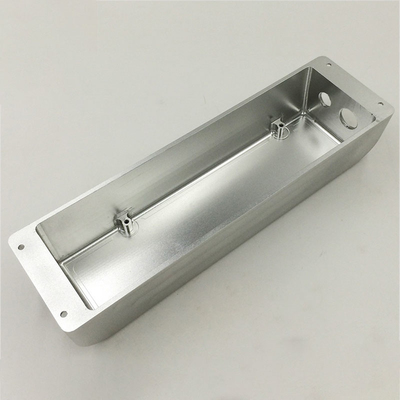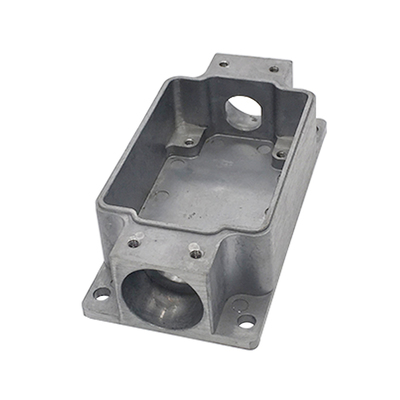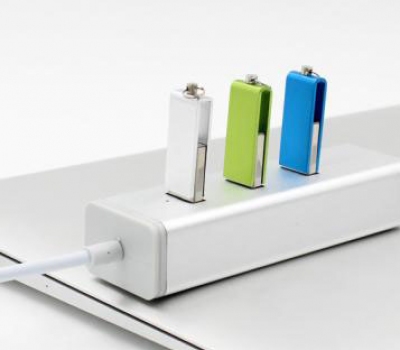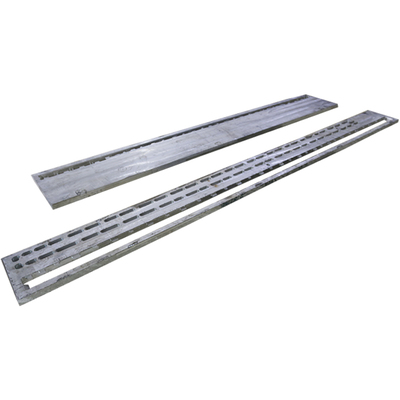Is Stainless Steel Magnetic?

Stainless steel is a group of iron-based alloys known for their corrosion resistance, durability, and aesthetic appeal. It is used in a wide range of applications, from kitchen utensils and medical devices to industrial equipment and architectural structures. One common question about stainless steel is whether it is magnetic. The answer to this question depends on the type of stainless steel and its specific composition. This article explores the magnetic properties of stainless steel, including the underlying principles of magnetism, the different types of stainless steel, and their respective magnetic characteristics.
1. Introduction to Stainless Steel
1.1 Definition and Composition
Stainless steel is an alloy primarily composed of iron, chromium, and other elements, with chromium being the key ingredient responsible for its corrosion resistance. The chromium content typically ranges from 10.5% to 30%, which forms a passive layer of chromium oxide on the surface of the steel, preventing rust and staining. Other alloying elements may include nickel, molybdenum, and manganese, each contributing to various properties of the steel.
1.2 Types of Stainless Steel
Stainless steel is classified into several types based on its crystalline structure and alloying elements. The primary types are:
-
Austenitic Stainless Steel: This is the most common type, characterized by its face-centered cubic (FCC) crystal structure. It generally contains high levels of chromium (16-26%) and nickel (6-22%). Examples include types 304 and 316.
-
Ferritic Stainless Steel: This type has a body-centered cubic (BCC) crystal structure and is generally magnetic. It contains chromium (10.5-27%) but little to no nickel. Examples include types 430 and 446.
-
Martensitic Stainless Steel: This type is characterized by a body-centered tetragonal (BCT) crystal structure and is often magnetic. It typically contains chromium (12-18%) and can be hardened by heat treatment. Examples include types 410 and 420.
-
Duplex Stainless Steel: This type combines austenitic and ferritic structures, providing a balance of strength and corrosion resistance. Examples include types 2205 and 2507.
-
Precipitation-Hardening Stainless Steel: This type can be heat-treated to increase hardness and strength. It typically has a martensitic structure. Examples include types 17-4 PH and 15-5 PH.
2. Principles of Magnetism
2.1 Basic Concepts
Magnetism is a physical phenomenon produced by the motion of electric charges. It is characterized by the interaction between magnetic fields and materials. The magnetic properties of a material depend on its atomic structure and the alignment of magnetic domains within it.
2.2 Types of Magnetic Materials
Materials can be categorized into different types based on their magnetic properties:
-
Ferromagnetic Materials: These materials have a high magnetic permeability and can be magnetized easily. They exhibit strong magnetic properties due to the alignment of magnetic domains. Examples include iron, cobalt, and nickel.
-
Paramagnetic Materials: These materials have a weak and temporary magnetic response to an external magnetic field. The magnetic dipoles within the material align with the field but do not retain magnetization once the field is removed. Examples include aluminum and platinum.
-
Diamagnetic Materials: These materials create an opposing magnetic field in response to an external magnetic field, resulting in a very weak repulsion. Diamagnetism is a property exhibited by all materials but is usually very weak. Examples include bismuth and copper.
3. Magnetic Properties of Stainless Steel
3.1 Austenitic Stainless Steel
Austenitic stainless steels, such as types 304 and 316, are generally non-magnetic or weakly magnetic. The face-centered cubic (FCC) crystal structure of austenitic stainless steels does not support long-range magnetic order, making them less likely to exhibit significant magnetic properties. However, they can become slightly magnetic under certain conditions, such as cold working or welding, which can induce some magnetic characteristics due to the formation of martensite or other phases.
3.2 Ferritic Stainless Steel
Ferritic stainless steels, such as type 430, are inherently magnetic due to their body-centered cubic (BCC) crystal structure. The magnetic properties of ferritic stainless steels are more pronounced compared to austenitic types, as the BCC structure allows for the alignment of magnetic domains. Ferritic stainless steels are used in applications where magnetic properties are desired or where non-magnetic properties are not critical.
3.3 Martensitic Stainless Steel
Martensitic stainless steels, such as types 410 and 420, are magnetic due to their body-centered tetragonal (BCT) crystal structure. The martensitic structure is formed through heat treatment processes, which increase the hardness and strength of the steel. Martensitic stainless steels exhibit significant magnetic properties and are used in applications requiring both hardness and magnetism.
3.4 Duplex Stainless Steel
Duplex stainless steels, such as types 2205 and 2507, exhibit both austenitic and ferritic phases. The magnetic properties of duplex stainless steels are intermediate between those of austenitic and ferritic types. The presence of ferritic phases contributes to their magnetic behavior, but the overall magnetism may vary depending on the specific composition and processing of the steel.
3.5 Precipitation-Hardening Stainless Steel
Precipitation-hardening stainless steels, such as types 17-4 PH and 15-5 PH, typically have martensitic structures and exhibit magnetic properties similar to those of martensitic stainless steels. The heat treatment process used to harden these steels can influence their magnetic characteristics.
4. Factors Affecting Magnetic Properties
4.1 Alloy Composition
The specific alloying elements in stainless steel can influence its magnetic properties. For example, the presence of nickel can affect the magnetic response of austenitic stainless steels, while higher chromium content in ferritic or martensitic stainless steels can enhance their magnetic properties.
4.2 Heat Treatment
Heat treatment processes, such as annealing, quenching, and tempering, can alter the magnetic properties of stainless steel. For example, the formation of martensite during heat treatment can increase the magnetic properties of austenitic stainless steels.
4.3 Cold Working
Cold working, such as rolling or forging, can induce changes in the microstructure of stainless steel, potentially affecting its magnetic properties. Cold working can lead to the formation of martensitic phases in austenitic stainless steels, resulting in increased magnetism.
4.4 Welding and Fabrication
Welding and fabrication processes can introduce thermal and mechanical stresses that affect the magnetic properties of stainless steel. For example, welding can lead to the formation of martensite in austenitic stainless steels, resulting in localized magnetic behavior.
5. Applications and Implications
5.1 Industrial Applications
The magnetic properties of stainless steel play a significant role in various industrial applications. For example, ferritic and martensitic stainless steels are often used in magnetic applications such as magnetic separators, sensors, and actuators. Austenitic stainless steels, being non-magnetic, are preferred in applications where magnetic interference must be minimized, such as in electronic devices and medical equipment.
5.2 Architectural and Structural Applications
In architectural and structural applications, the magnetic properties of stainless steel can influence design considerations. For example, ferritic stainless steels may be used in structures where magnetic properties are beneficial, while austenitic stainless steels are chosen for their non-magnetic properties and aesthetic appeal.
5.3 Magnetic Resonance Imaging (MRI)
In medical applications, particularly in MRI machines, the non-magnetic properties of stainless steel are crucial. Austenitic stainless steels are often used in MRI equipment to avoid interference with the magnetic field and ensure accurate imaging.
6. Conclusion
In summary, whether stainless steel is magnetic depends on its type and composition. Austenitic stainless steels are generally non-magnetic or weakly magnetic, while ferritic and martensitic stainless steels exhibit more pronounced magnetic properties. Duplex and precipitation-hardening stainless steels exhibit intermediate magnetic characteristics. Understanding the magnetic properties of stainless steel is essential for selecting the appropriate material for various applications and ensuring optimal performance in industrial, architectural, and medical contexts.
Reprint Statement: If there are no special instructions, all articles on this site are original. Please indicate the source for reprinting:https://www.cncmachiningptj.com/,thanks!
 PTJ® provides a full range of Custom Precision cnc machining china services.ISO 9001:2015 &AS-9100 certified. 3, 4 and 5-axis rapid precision CNC machining services including milling, turning to customer specifications,Capable of metal & plastic machined parts with +/-0.005 mm tolerance.Secondary services include CNC and conventional grinding, drilling,die casting,sheet metal and stamping.Providing prototypes, full production runs, technical support and full inspection.Serves the automotive, aerospace, mold&fixture,led lighting,medical,bicycle, and consumer electronics industries. On-time delivery.Tell us a little about your project's budget and expected delivery time. We will strategize with you to provide the most cost-effective services to help you reach your target,Welcome to Contact us ( [email protected] ) directly for your new project.
PTJ® provides a full range of Custom Precision cnc machining china services.ISO 9001:2015 &AS-9100 certified. 3, 4 and 5-axis rapid precision CNC machining services including milling, turning to customer specifications,Capable of metal & plastic machined parts with +/-0.005 mm tolerance.Secondary services include CNC and conventional grinding, drilling,die casting,sheet metal and stamping.Providing prototypes, full production runs, technical support and full inspection.Serves the automotive, aerospace, mold&fixture,led lighting,medical,bicycle, and consumer electronics industries. On-time delivery.Tell us a little about your project's budget and expected delivery time. We will strategize with you to provide the most cost-effective services to help you reach your target,Welcome to Contact us ( [email protected] ) directly for your new project.

- 5 Axis Machining
- Cnc Milling
- Cnc Turning
- Machining Industries
- Machining Process
- Surface Treatment
- Metal Machining
- Plastic Machining
- Powder Metallurgy Mold
- Die Casting
- Parts Gallery
- Auto Metal Parts
- Machinery Parts
- LED Heatsink
- Building Parts
- Mobile Parts
- Medical Parts
- Electronic Parts
- Tailored Machining
- Bicycle Parts
- Aluminum Machining
- Titanium Machining
- Stainless Steel Machining
- Copper Machining
- Brass Machining
- Super Alloy Machining
- Peek Machining
- UHMW Machining
- Unilate Machining
- PA6 Machining
- PPS Machining
- Teflon Machining
- Inconel Machining
- Tool Steel Machining
- More Material





